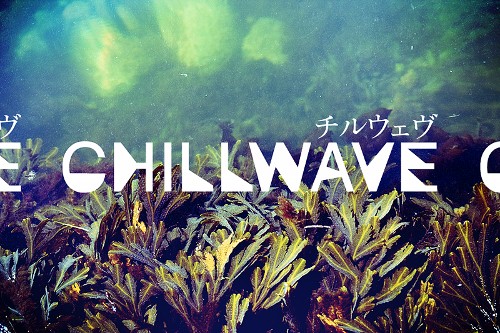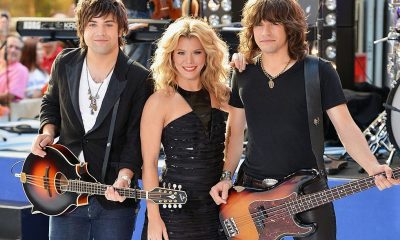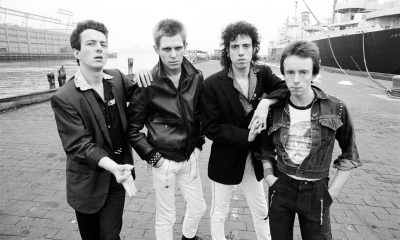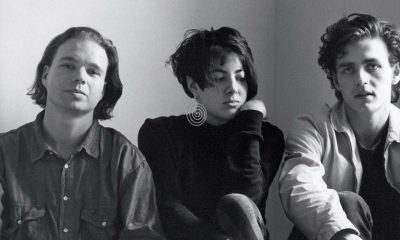Columns
Genres 101: Ambient, Chillwave and Witch House
I’d like to think that witch house is a cynical response to chillwave, turning the latter’s quiet rhythmic nostalgia on its head and crucifying it on an upside-down cross.

Modern music seems so complicated, doesn’t it? There’s a seemingly endless number of names for an endless number of subgenres, and keeping track of them is usually more tiresome than the act of actually listening to the music itself.
But never fear, American Noise readers, because that’s why I’m here. Each week, we’ll examine a different style of music and discuss some of the classifications associated with that style. The goal, of course, is not to memorize every music label ever, but rather to sort through the jargon and appreciate the qualities these genres share and build upon. Whether you’re at a party and need to impress someone with your knowledge of contemporary musical movements, or you’re simply trying to read a music review that seems to be written in its own language, we’ll make sure you’ve got your labeling bases covered.
This week, we’ll focus on ambient music. As a genre, it has the annoying tendency to produce fantastic music with terrible nomenclature. Everything is “post-” something else or has a “-house” or “-wave” tacked on the end. And what does something like “noise-pop” even mean, anyway? Isn’t all pop music a sort of noise?
Categorizing ambient music is like trying to write a novella using refrigerator magnet poetry; you’ve got a limited vocabulary and a never-ending barrage of genre-bending artists releasing new material each week on their Bandcamp pages. How do you categorize music that defies limitations and expectations?
You hyphenate it, that’s how. It’s a known fact that the more hyphens your chosen genre contains, the better your music will be. With that in mind, let’s begin!
Witch House is characterized by unintelligible lyrics, the lowest of lo-fi production values, and thick, plodding tempos that borrow hip-hop beats and slow them down to appropriately melancholy speed. And that’s the problem—there’s a lot of great witch house music being made right now, but it sounds absolutely terrible when you try to describe it. I guess it’s called “witch house” because the music sounds kind of spooky, and witches are spooky, and since the songs were probably recorded in someone’s bedroom, you can call it house.
Frankly, that name sounds more like a Super Mario Bros. level than a musical genre—it’s a-me, Mario, and I’ve got to a-borrow from a-Brian Eno!
Mr. Eno provides a good starting point for examining witch house music. Like today’s witchiest house-dwellers, he sought to make music that was more about atmosphere than melody (as found on his seminal 1978 work Music For Airports).
Unfortunately, unlike Brian Eno, today’s witch house artists seem to enjoy being impossible to talk about. I mean that literally—how the heck do you pronounce “oOoOO,” which is the moniker of a popular witch house artist from San Francisco? And try Googling “†‡†,” who recently released a song titled “>>>>▲<<<<.”
Yes, that’s the name of the song. When I play it on iTunes, it looks my computer has been infected with a gibberish virus.
While not all witch house artists have indecipherable names—Zola Jesus, White Ring, and Terminal Twilight, for instance, are straightforwardly named—a good many do. Between the aforementioned artists and other acts like LEEP ∞ OVER and xix, the genre’s artists tend to pick names that reflect their music’s concern with the unknowability of human emotion.
And this is totally harmless, of course, except for the fact that it runs the risk of coming across as a bit too silly for its own good. That’s a plight that plagued…
…Chillwave. Remember this? Last year saw a host of chillwave artists (Washed Out, Memoryhouse, Neon Indian, Memory Tapes) arrive on the scene, and guys like MillionYoung Toro Y Moi have taken up the genre’s mantle in 2010. Despite the fact that much of this music is very good, the term chillwave has acquired the same unfortunate cachet that now accompanies other genre signifiers like “blog house” and even more general terms like “hipster.” What gives?
Well, for one thing, it comes across as a bit disingenuous to deem yourself “chill.” It’s like bragging about modesty. The popular hypothesis states that chillwave grew popular out of the apathy and introversion of the nation’s youth in the face of several wars, a seemingly disappointing Obama presidency, and the economic shitshow that’s marked the past couple of years. In the wake of the Tea Party’s proliferation and such attempts at counter-programming as Jon Stewart’s Rally to Restore Sanity, however, it’s not quite as “cool” to be “chill.”
Such resignation is now seen as passive. Indeed, the chillwave has crested—and thanks to market saturation, it’s no longer enough to drape one’s pop melodies in drowsy synths and down-by-the-shore sound effects. I’m not saying that chillwave as a genre is necessarily played out, but if you call yourself a “chillwave artist” now, in October of 2010, you’ll face as much derision as you will admiration. I’d like to think that in a way, witch house is a cynical response to chillwave, turning the latter’s quiet rhythmic nostalgia on its head and crucifying it on an upside-down cross.
Plus, you know, the neologism itself is kind of lame. “Chillwave” sounds like something your stoner older cousin might talk about as he pecks at his Casio keyboard and rips bong hits on yet another unemployed Tuesday afternoon. No matter; the music deserves better classification than the current designations can offer, and artists like Washed Out can only benefit from an abandonment of the nomenclature.
Ambient folk music is tricky to identify, because it seems to mean one thing in America and another in Europe. See, across the pond, Norse and/or Slavic mythology—the kind of stuff you’d expect heavy metal bands to scream about—has informed a quietly intense subgenre that’s been deemed “folk.”
Here in the States, however, “ambient folk” has a more countrified connotation. We Yankees consider Finnish artist Islaja, who specializes in folk music of the avant-garde variety, California’s Jesca Hoop and even Devendra Banhart to be the bearers of this particular cross. Think acoustic guitars and wandering, challenging melodies.
Many critics refer to this style of music as inaccessible, but try listening to Islaja’s 2004 debut Meritie. If you’re anything like me, you’ll find yourself immediately engrossed by her Bjork-y meditations and inviting voice. Also, her lyrics are in Finnish, so you may not know what the hell she’s talking about, but it sure is pretty. If you want something a little more straightforward from this genre, try Grizzly Bear’s 2006 album Yellow House, which is the musical equivalent of antique shopping in Hyrule.
I’ll end this installment of genre tourism with a quick visit to the unclassifiable appendages of this genre. Floridian duo Viernes, Animal Collective member Avey Tare (whose solo debut, Down There, comes out next week), San Diego native Gonjasufi, Flying Lotus, and Aphex Twin occupy different spaces underneath the ambient umbrella. They’re all experimental, to varying degrees, although what makes something “ambient” as opposed to simply “electronic” is hard to pin down; it might include the absence of melody and/or lyrics, nonsensical song and album titles, heavy musical repetition, a near exclusive use of synth instrumentation, and an avoidance of the typical verse/chorus/verse pop song structure.
The best ambient music challenges the listener, while at the same inviting him or her to a bizarre yet fulfilling musical landscape culled straight from the artist’s wacky imagination. In other words, your favorite ambient artist may break all these rules and defy categorization. That’s cool. There’s a certain visceral connection one has to ambient music; it’s stuff you feel as much as listen to.
As Zola Jesus assures us on “Night,” “In the end of the night I can feel you breathe. Don’t be afraid, don’t be alarmed; in the end of the night, you’re in my arms.”
Ambient artists won’t lead you too far astray, I promise.
- Lists13 years ago
Top 10 Country Music Albums of 2010

 Interviews5 years ago
Interviews5 years agoJohn Rich – The Interview

 Song Reviews16 years ago
Song Reviews16 years agoTaylor Swift – “Love Story”

 Interviews5 years ago
Interviews5 years agoHoneyhoney on Hiatus: Revisit our 2008 Interview with Suzanne Santo

 Album Reviews14 years ago
Album Reviews14 years agoAlbum Review: Miley Cyrus – Can’t Be Tamed

 Song Reviews6 years ago
Song Reviews6 years agoThe Band Perry – “Hip To My Heart”

 Columns5 years ago
Columns5 years agoThe Link Between Folk Music’s Past and Present

 Columns5 years ago
Columns5 years agoIs Marketing Killing Rock and Roll?





